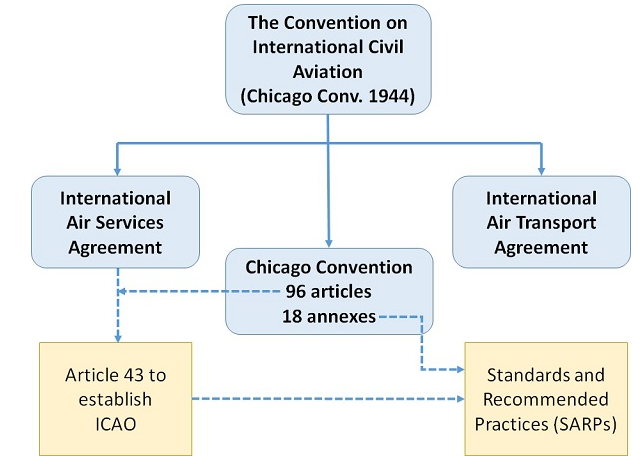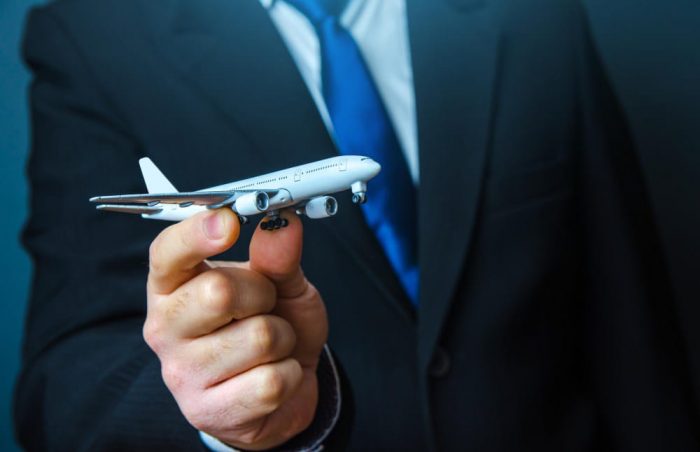Commercial and Business Law
Aviation
The area of law that relates to flying, air travel, and any related legal or commercial issues is known as aviation law. Because of the nature of air travel, some of its areas of concern overlap with admiralty law, and aviation law is frequently regarded as an issue of international law. Aviation law also governs the commercial aspects of airlines and their regulation.
-
The International Civil Aviation Organization (ICAO)
-
The important conventions on public international air laws
-
Public Air Law
-
Private Air Law
-
International Civil Aviation Organization (ICAO)
-
Freedom of the Air
The International Civil Aviation Organization (ICAO)
The International Civil Aviation Organization (ICAO) sets general guidelines and, to a certain extent, mediates international problems in relation to aviation law on a global scale. The United Nations has a specialised organisation called the ICAO. Aviation law is governed at the federal or state level in the United States and in the majority of European countries. In the majority of circumstances, states in the United States are unable to regulate aviation issues actively and must instead rely on federal statutes and case law to fulfil this role. For instance, because aviation regulation is typically a federal matter, a court recently invalidated New York’s Passenger Bill of Rights law. However, unlike admiralty law, aviation law is not subject to the same federal requirement of the jurisdiction in the United States; in other words, whereas the United States Constitution provides for the administration of admiralty, it does not do so for aviation law. There is indirect regulation of aviation by states and municipalities. For instance, zoning regulations may stipulate that an airport be situated distant from residential areas or that airport use be limited to specific hours of the day. Federal law does not preempt state product responsibility laws, and in the majority of cases, aviation manufacturers may be held strictly accountable for flaws in their equipment. Although it is a relatively new topic of law, space law, which regulates matters in space outside of Earth’s atmosphere, already has its own publications and academic backing. Aviation law and space law are intertwined in many ways.
The important conventions on public international air laws
- Convention Relating to the Regulation of Aerial Navigation (Paris Convention).
- Convention on International Civil Aviation (Chicago Convention).
- International Air Services Transit Agreement.
- International Air Transport Agreement.
- Multilateral Agreement on Commercial Rights of Non-Scheduled Air Services among the Association of South East Asian Nations (ASEAN).
- Memorandum of Understanding Between the Governments of Indonesia, Malaysia and
- Thailand on Expansion of Air Linkages (IMT-GT).
- Thai Draft Air Services Agreement.
- Agreement between the United Kingdom of Great Britain and Northern Ireland and the United States of America.
- U.S. Model Air Transport Agreement.
- General Agreement on Tariffs and Trade.
- General Agreement on Trade in Services.
- Agreement on Trade in Civil Aircraft.
Public Air Law
Aeropolitical interactions between states, as well as those between states and other air law topics, including air carriers and airlines, are governed by public air law. The International Civil Aviation Organization (ICAO) and the International Air Transport Association are the two principal institutional agencies that make up the public air law framework, which was founded by the 1944 Chicago Convention on International Civil Aviation (IATA). Airlines can be governed using a variety of strategies, including alliances, regulated bilateral talks, deregulated open skies laws, and various types of cooperation including “codesharing.”
Key issues pertaining to the Asia-Pacific area will be highlighted while evaluating the industry’s global nature, including the competitiveness of Asian carriers in the face of liberalisation in Europe and the United States and the rise of the Gulf carriers.
The three main international conventions—the Tokyo, The Hague, and Montreal Conventions—as well as a document addressing violence in airports and a convention on the labelling of plastic explosives—set up the framework for aviation security.
Private Air Law
When an injury occurs during a flight, private aviation law controls the interaction between the air carrier and the passenger. The so-called “Warsaw system,” as modernised by the 1999 Montreal Agreement, is in place in this region. Additionally, there is the interaction between the operator and local third parties, which is governed by the Rome Convention framework and its updates. Regarding rights in aircraft, private air law also addresses matters such as mortgages, leases (which are controlled by the UNIDROIT/Cape Town Convention framework), and aviation insurance.
Private air law is heavily influenced by case law, and a number of cases from various countries will be used to highlight the legal issues at hand.
International Civil Aviation Organization (ICAO)
An Assembly made up of members from the contracting states, a Council made up of different subordinate bodies, and a Secretariat make up the ICAO. The Council President and the Secretary General are the top officials. Every three years, the ICAO has meetings to discuss the work and establish future policies.
The convention modifies the guidelines, norms, and suggestions. In order to arrange the provision of the air navigation facilities and on-ground services the aircrafts need for operating in these regions, ICAO has identified nine distinct geographic regions.
Freedom of the Air
There are five distinct air freedoms. Three commercial liberties come after the first two technological freedoms.
- First Freedom: An aeroplane from State A has the right to fly over State B without stopping.
- The second freedom is the ability of an aircraft from State A to make a technical landing in State B.
- The ability of aircraft from State A to accept paying traffic from State A and land in State B is the third freedom.
- The right of an aeroplane from State A to pick up paying traffic in State B and land it in State A is known as the fourth freedom.
- The ability of aeroplanes from State A to transport paying passengers from State B to State C is the fifth freedom.
Find Best Lawyers and Legal help in
Latest Articles
Tell us more about your problem.
Please give a brief description about what it is you need to talk to our lawyers about ?











